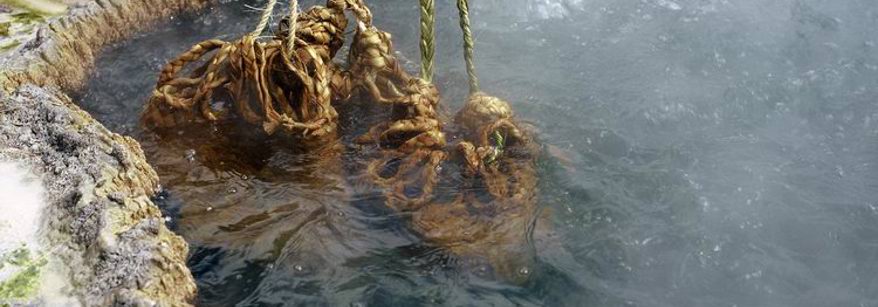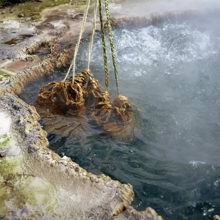Geothermal areas within the Bay of Plenty region are valued for their vast quantities of thermal energy, mineralised fluids, and increasingly for their economic, social, heritage and cultural values.
Economic
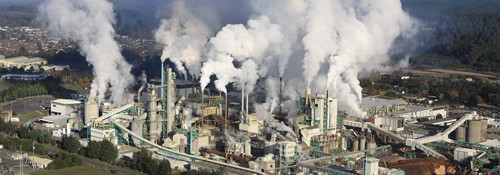
Geothermal activity and the extractive use of heat energy from systems across the region contribute substantially to the regional economy due to their range of uses.
Geothermal activity is a distinctive feature of the New Zealand landscape, contributing to the regional economy through GDP (value-added) and jobs, and providing environmental, cultural, social, and economic wellbeing benefits to New Zealanders and international visitors.
The economic activities associated with geothermal resources depend on the characteristics of the resource and other factors including location, supporting infrastructure and nearby land uses. There are 12 systems in the Bay of Plenty region, each has different characteristics and is managed accordingly. For example, the Kawerau system provides heat for industrial processing (e.g., wood, pulp and paper, dairy processing) and electricity generation, while the Rotorua system is mainly associated with tourism (e.g. geothermal tourist attractions, space and water heating in motels and bathing in geothermal water). The Tauranga System is a low temperature system and provides agriculture/horticulture (e.g. glass house heat) and tourism (e.g. mineral pools).
Various reports have assessed the different ways that geothermal contributes to the regional economy.
- Conroy and Donald (2014). Valuing uses of the Bay of Plenty Geothermal Resource
- Bay of Plenty Regional Council (2017). Valuing geothermal attributes in the Bay of Plenty region. A survey of visitors to four Rotorua geothermal tourism sites.
- Barnes (2022). The Economic Impacts and Benefits and Costs of Geothermal Resources in the Bay of Plenty Region.
Some of the existing and potential geothermal uses include:
- Geothermal tourism associated with surface features.
- Hot pools for bathing, cooking, and wellness and therapeutic health benefits.
- Direct use of geothermal energy for electricity generation.
- Heavy industry such as pulp and paper and solid wood processing mills.
- Heating of domestic buildings and water supply, including private pools.
- Heating of commercial buildings and water supply e.g. Rotorua Hospital.
- Space heating and frost protection for horticulture e.g. glasshouses and hydroponics.
- Land-based aquaculture.
- Mineral extraction e.g. silica.
- Conservation and scientific study that aids in the understanding of other resources and processes such as volcanic eruptions.
Social
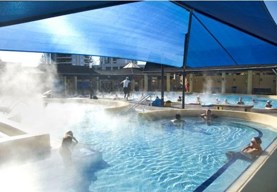
The amenity and recreational benefits of geothermal such as public spaces and bathing areas and the wellbeing benefits from the likes of health treatments and home heating are of significant value to the community.
Additionally, as an educational tool, Geothermal Systems their features, natural processes and ecological components combine to create a significant and valuable scientific and educational resource. The research effort on the Rotorua system for example has furthered the evolution of geothermal systems theories and been of tremendous scientific value. While the Waimangu valley, formed following the June 10th 1886 Tarawera eruption, represents the only geothermal system globally to have had a volcanic eruption through it in recent recorded history and is of considerable scientific value.
Ecological
Geothermal systems are globally rare, in our region we have a quarter of New Zealand’s geothermal vegetation with some plant associations being found nowhere else in the world . These diverse life forms and their genetic material provide many unique opportunities for the future. For more information visit our Surface features page.
Heritage and Cultural
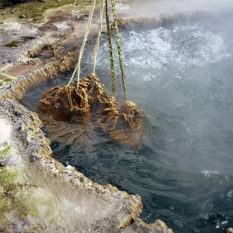
Geothermal resources have been an integral part of Māori culture for hundreds of years, with tangata whenua regarding them as a taonga (treasure) and a gift from Atua (gods and spirits). Māori have traditionally used heated waters for cooking, washing, bathing, heating, preserving, ceremonial use and healing. Geothermal remains integral to Māori culture today, particularly in Rotorua, which has one of the largest and most active geothermal fields in the world. To find out more, read the report prepared by the Ahi Kaa Roa working group which focusses on Hau Kāinga perspectives on the health and wellbeing of geothermal taonga within Rotorua.
Rotorua was also the birthplace of tourism in New Zealand, with visitors travelling from throughout the world since the 1800s to experience the region’s geothermal wonders and Māori hospitality. Examples of this rich heritage include the communities of Whakarewarewa Valley and Ōhinemutu and the more recent Victorian setting of Government Gardens, the Bathhouse (now the Rotorua Museum) and the Blue Baths.

